Ready to walk the Camino de Santiago? We've got you: Part 6 of the Camino series
You've dreamt about walking this famous pilgrimage route across Spain and now you want to make it a reality. In the final part of the series, we share our best confidence-boosting tips and resources.
Hello friends! Some of you are new here and many of you are old friends—so glad you’re here. If you’re new, check out Welcome! An introduction to Living in 3D. You may notice a new logo and a new title for this newsletter as simply Living in 3D. More on that pivot in direction next week! A special thank you to the talented Louisa at
for helping me with the new logo design.We’ve reached the end of our Camino series, co-authored with my daughter
who just launched her own Substack newsletter, . If you appreciated the insights and inspiration in this series, hop over to Marielle’s newsletter and check out the hidden gems and curated itineraries from this intrepid traveler. Today’s essay is read by Marielle, so enjoy her excellent voiceover.Note: We had a lot of good info to share, so if this essay is cut off in your email, click on "View entire message" to view the full post in your email app.
Today is Part 6: Planning Your Camino where we share the practical tips and resources we used to plan this journey and lessons learned along the way.
Need to catch up? Here’s a quick review of the earlier essays explaining our “why” for walking 300 kilometers (186 miles) across Portugal and Spain.
Part 1: Walking myself home on the Camino de Santiago: A backwards glance at big life changes: divorce, dementia caregiving and the ebb and flow of grief.
Part 2: Outlasting the Fog: Traveling inwards through heart and soul, finding hidden reserves of strength and grateful acceptance of the present moment.
Part 3: The Truth Beneath Words: Eyes on the road ahead, revealing new vistas at every turn—a destiny not to be managed but a gentle unfolding.
Part 4a: What shadows and tides taught me about finding ease: How to live with more ease, with nature as a teacher, and “the water in all of us.”
Part 4b: What a pearl and a nautilus taught me about finding ease: A pearl is a happy accident and like the nautilus, ours is a multi-chambered existence.
Part 5: We Are All Rivers, A Journey through Song: Music is the universal language. Pilgrims share the songs that keep them going when life gets hard.
A bonus for paid subscribers: join our hour-long live Zoom call Saturday November 2 at 8am PST/11am EST/5pm CET to answer all your questions about walking the Camino. Look for the link in an email coming shortly.
We spent two weeks walking along the ancient paths of the Camino de Santiago, a pilgrimage of the spirit, an embrace of nature and community. There are as many different ways to walk the Camino as there are different kinds of pilgrims. In four sections below, Scenic Paths, Culinary Journeys, Cultural Insights and Preparation Tips, we’ll sum up our best tips and tricks.
Scenic Paths
Santiago de Compostela has been a critical pilgrimage destination in Europe for millennia, so it is no surprise that there is a widespread network across the whole continent of possible paths to take to the famed cathedral holding the purported remains of the Apostle Saint James.
The most famous one, featured in movies like “The Way” and shows like “3 Caminos”, is the Camino Frances, The French Way. It traditionally starts in the French town of Saint Jean Pied de Port and starts with crossing a tough passage through the Pyrenees and then traversing through Galicia for at least a month. If you don’t have a month to do it, many people only do a portion of it, with a range of possible starting points in Spain. While this path is historic and has well-established infrastructure for pilgrims (good signage and plenty of places to stay), it can get rather busy in the high season, and the landscape after crossing the mountains can be rather monotonous.
The second most popular is the one that we did: the Camino Portugues, or the Portuguese Way. It can start all the way from Lisbon if you want to see more of Portugal, but most people start it from Porto, and manage to arrive to Santiago de Compostela between 10 to 14 days. From Porto, there are a few options for this route; either you can walk along the coast the whole way (Coastal Route), or inland (Central Route) or a combination of the two based on some connecting trails. You can also take an alternative route out of Porto, the Camino Litoral, that has you take a detour along the river out to the coast rather than cut through an industrial zone to the seaside town of Matosinhos.
On the Portuguese route you also have the option of taking the Spiritual Variant on your last few days before arriving to Santiago, which requires one extra day of walking than if you had continued along the Central Route to Caldas de Reis, but that extra day involves one of the most magical stretches of the Camino, the Ruta de Pedra e Agua that we mention here and here.
Other options, that also take around two weeks, include the Camino del Norte that takes you through beautiful Basque country, and the Camino Primitivo that starts in the charming Asturian capital of Oviedo and traverses the impressive Picos de Europa. Both of these routes require more ascents and descents (although this involves some stunning mountain scenery) that can be tough on the knees and generally require a higher fitness level. Both of these routes also don’t have as much infrastructure built up along the way.
The number one resource we used to plan our route: the Stingy Nomads’ Camino de Santiago walking guide. The couple that runs this website has walked several Camino routes multiple times and excellently documented the distances in both kilometers and miles, with photos of what to expect on each day of the journey on every route they’ve completed. On their website you will find many more routes, of varied lengths, than the ones we’ve mentioned here.
In the end, we chose the Camino de Portugues for the following reasons:
Most of it is relatively flat and therefore made sense for our fitness level (minimal training, not frequent mountain hikers)
Allowed us to combine a range of landscapes by blending a few different routes
Enabled us to include the Spiritual Variant, which, while not an official Camino route, is incredibly magical and memorable (and allows you to take a boat ride within the last 100km and still get the Compostela)
Popular enough that there was good infrastructure and many friends to be made, but not so crowded we couldn’t find some alone time on the way
Here is an overview of our final itinerary (and distances walked per day):
One benefit of taking the more popular routes is that there are more options for places to stay along the way, which gives you the great luxury to take your time. Walking the route too fast can cause injuries even if you are very fit, and make the experience rush by in a blur. Most people we met who had injuries had been walking an average of 30 kms per day in the beginning and regretted it, so we recommend aiming to walk no more than 25km per day.
That is one thing to note: everyone walks their own camino, at their pace, with their unique itinerary, rest stops, and both expected and unexpected companions along the way. People who came in a group discovered halfway they preferred to walk alone. Others picked up the route from where they left off years ago due to injuries. Some did a shortened version of the route, with a combination of walking and car, due to limited vacation time or a child waiting at home. There is no one way to walk the camino, so choose the right route for you.
However, if receiving that precious piece of paper in Latin that declares you completed the Camino, what pilgrims refer to as the “Compostela”, then you do have to make sure to walk at least the last 100kms of the Camino to Santiago (from whatever direction). If you want to walk the last 100kms of the Portuguese Way, you need to start in the Spanish town of Tui and it shouldn’t take more than 5-7 days of walking to get to Santiago de Compostela from there.
How do they know you walked all that distance, you may ask? Through the same system they’ve used since the Middle Ages. You must get two stamps per day stamped in your pilgrim’s passport, the “Credencial” that you can pick up in a Catholic church or cathedral in most cities in France or Spain. Most pilgrim accommodations, churches, and many restaurants and tourist spots offer stamps. The pilgrim’s passport and the Compostela are memorable souvenirs and it was fun to discover all the unique places to get a stamp, from a kitschy Che Guevara-themed bar in a small village in Portugal to a food truck in a Spanish forest that did an actual wax stamp of wolves surrounding a tree.
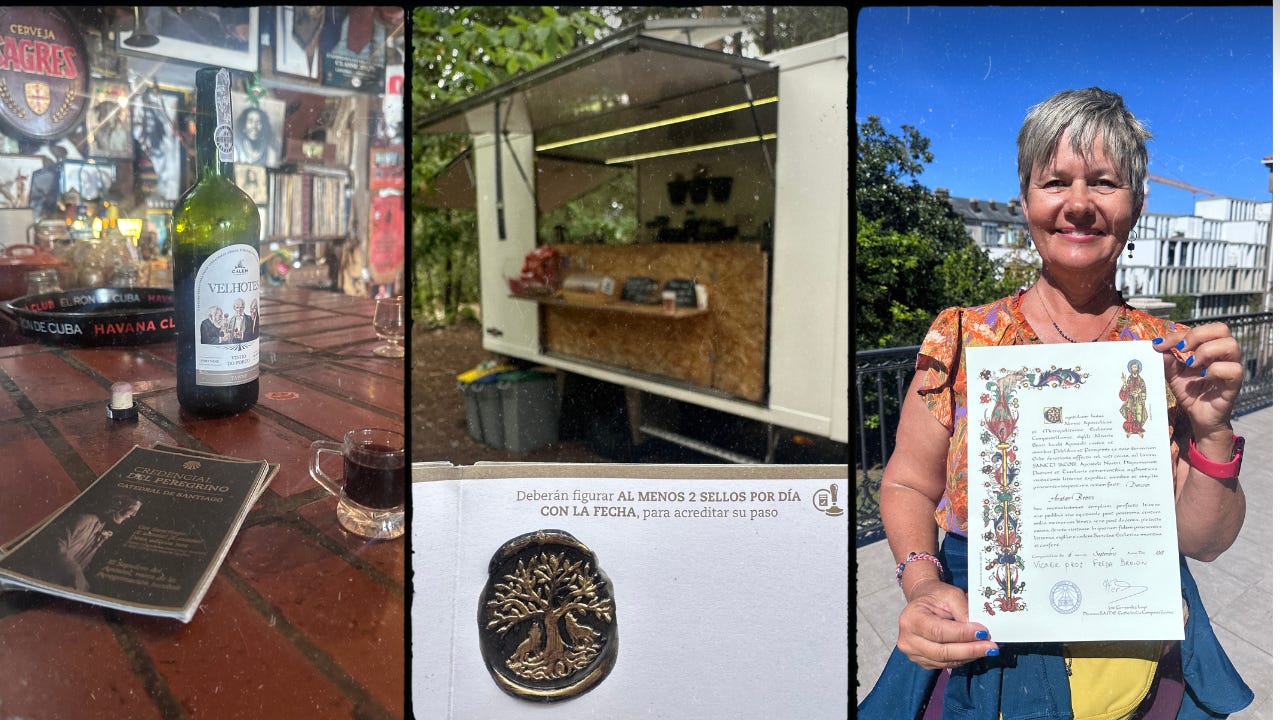
Culinary Journeys
We enjoyed the flavors of Portugal and Galicia, a way of literally tasting the landscapes we passed through. When walking such long distances and burning so many calories, food definitely becomes a preoccupation.
One of the highlights for Marielle of starting our journey out of Porto was the opportunity to do a port wine tasting. She sampled a range of delicious Vintage ports by local producers at Portologia, a wine bar situated in the heart of Vila Nova de Arousa, the neighborhood of Porto where most port wine is produced. After another couple glasses of port at a Fado performance right afterwards, it was no wonder that she started walking the Camino with a headache the next day!
Along the Coastal route, Marielle also indulged in a range of salty fresh seafood right by the oceanfront. From towers of mussels to scallops and oysters to freshly grilled fish and octopus, she definitely had her fill, all washed down with the excellent Portuguese Vinho Verde wine and with Galicia’s Albariño grape after we crossed into Spain.
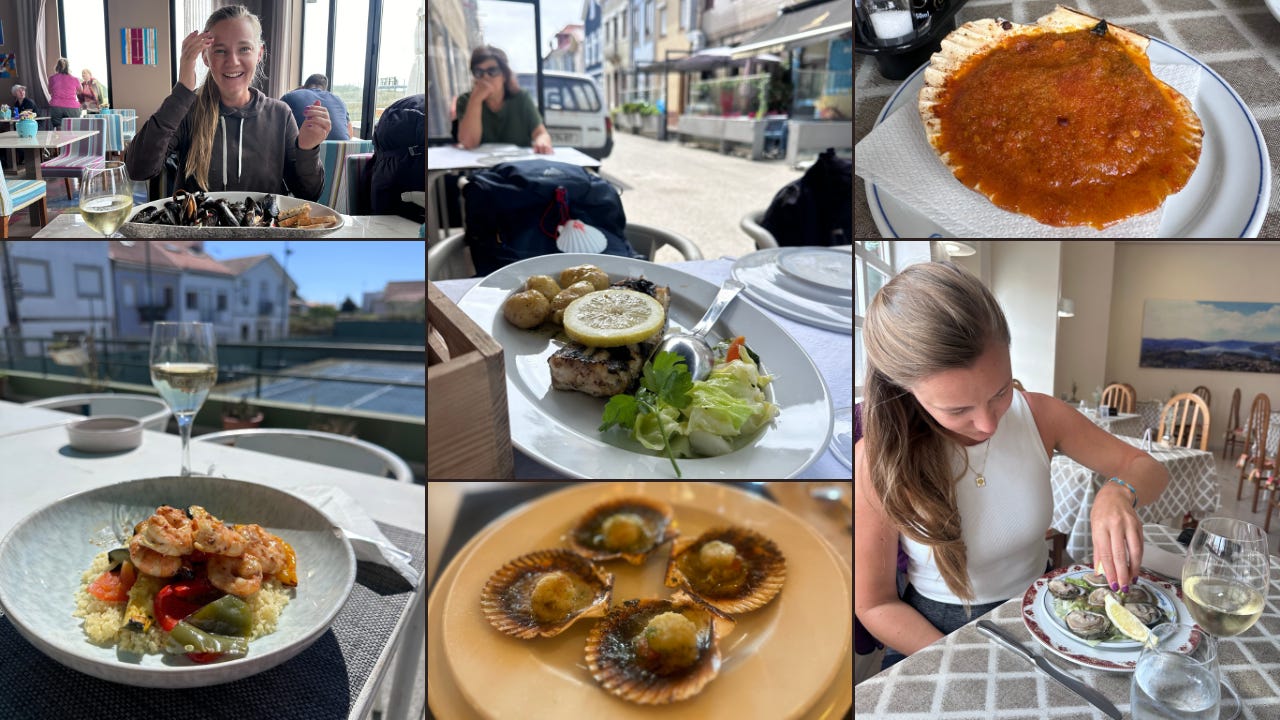
One of our unexpected dining highlights in Portugal was at none other than a bookstore! In the small Portuguese town of Povoa do Varzim, in search for a restaurant with a vegan- and gluten free-friendly menu, we stumbled upon a restaurant that also serves as a bookstore, with books to buy stacked on every table. One of the songs on our playlist comes from the waiter at this restaurant, who was incredibly careful about providing a gluten-free dish. We left stuffed to the brim and inspired by the concept; literary restaurants need to spread!
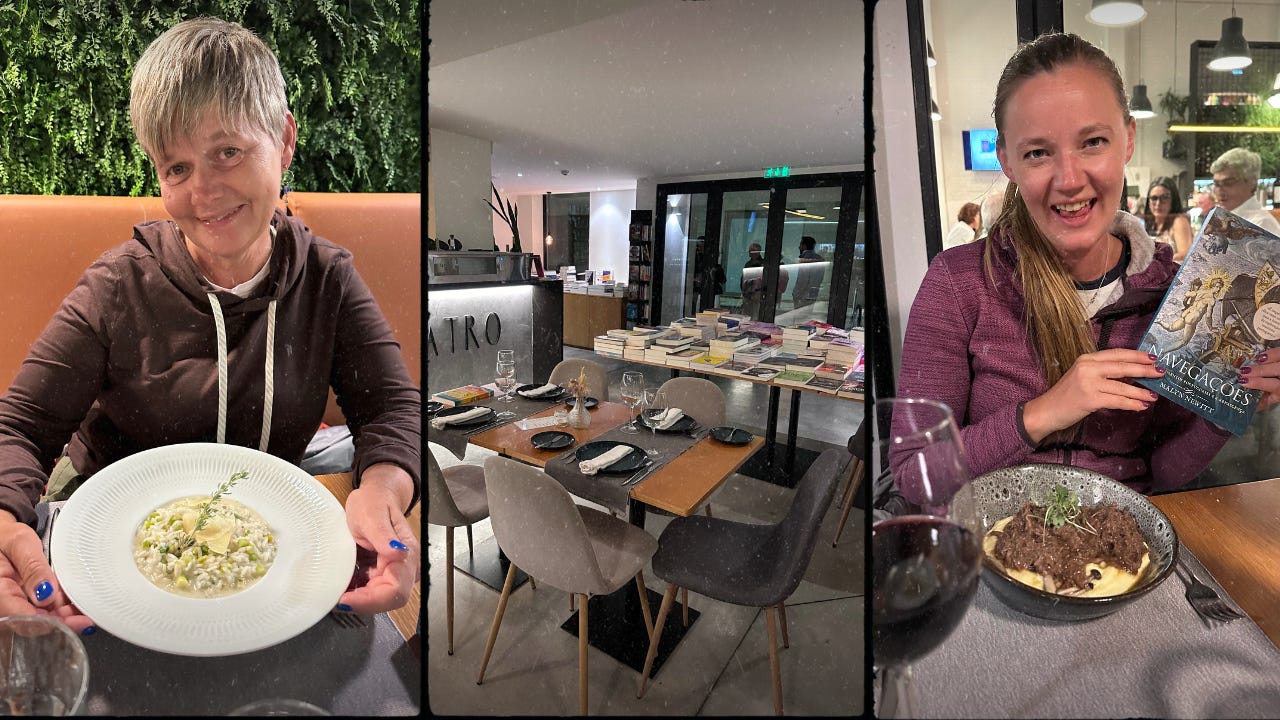
Amy was unsure how she would survive the Camino as someone with a gluten allergy, a vegan by preference and a vegetarian if necessary. The latter turned out to be the way to go. The classic Spanish tortilla, a thick eggs and cheese omelet, was available from the fanciest restaurant to the most modest pub, sold often by the slice. She also carried a plastic jar of peanut butter and rice cakes for quick protein. Still, if you’re on a restricted diet, think about packing high-protein snack bars and other snacks that fit your dietary needs. Stock up on fruit when you get a chance to go the supermarket. To be absolutely careful about gluten free food if you have celiac disease, as Amy does, our experience was that the more expensive restaurants tended to be better informed about gluten (see the bookstore restaurant above); a small price to pay to avoid any inconvenient allergic reactions.
Cultural Insights
It is the connection to local cultures and historical details that breathed life into this sacred route. Informative plaques made it an open air museum the whole way.
The plaques covered detail about the local flora and fauna, as well as local history. From breaking down in tears at a sign of local butterflies because of its connection to the guardian angels we felt were with us, to being moved by sculptures of women on “the Coast of Death” watching their loved ones lost at sea, these signs sometimes felt like literal “signs”, lending meaning to our emotional as well as physical journey. The many aging structures we passed, from abandoned windmills to old forts worn down by ocean storms, reminded us of how many pilgrims have passed through here as well.
Along the way we meandered past locals still participating in seaweed harvesting and wine production like they have done here for centuries, as the plaques so informatively told us. It put history into perspective; today is history in the making and we are a part of it, a stream of pilgrims sharing our way with so many spirits of the past.
One of the most dramatic cultural experiences was at the crossing over the border, first passing through a massive fortress with ramparts rising to face Spain, and the Spanish town of Tui rising on the other side of the river Minho with a magnificent cathedral straddling its hilltop. We benefited from a pilgrim’s discount to tour the Tui cathedral after showing our pilgrim’s passport, and spent at least an hour admiring the sweeping views and medieval vaults of this impressive structure, a humble preview of the famed Santiago cathedral.
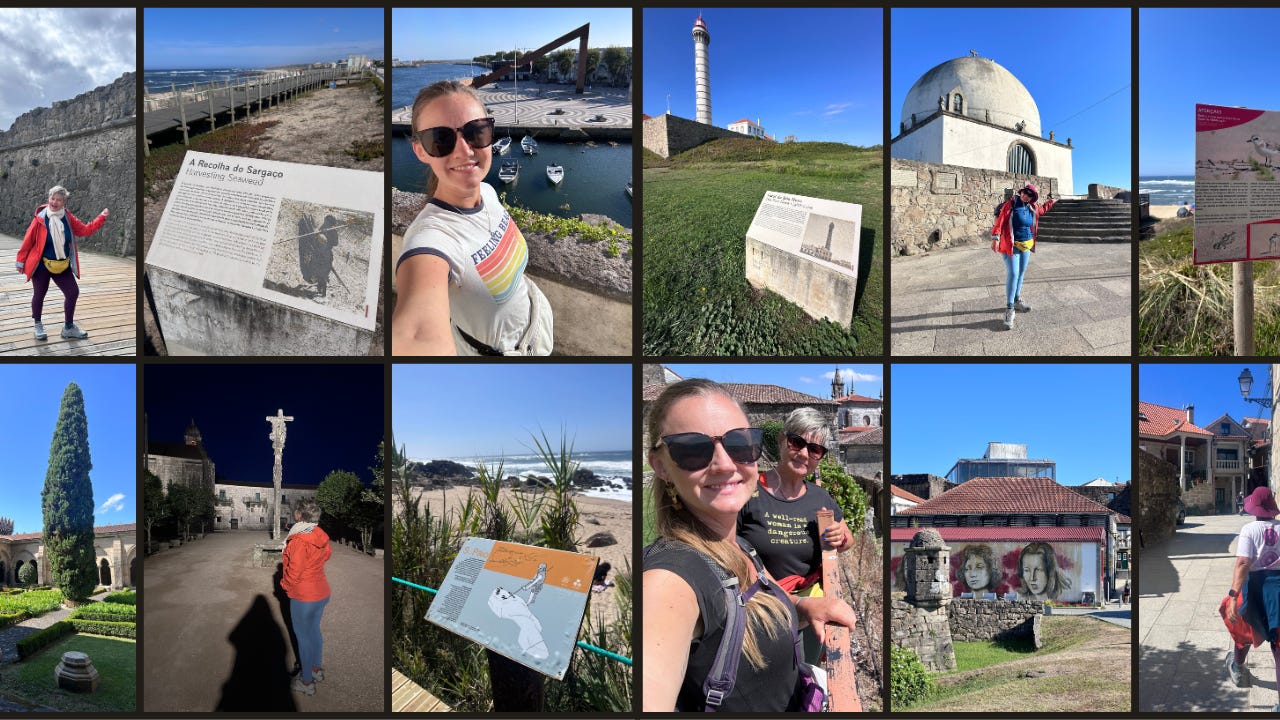
When we finally arrived to Santiago, we had the option to attend the famous pilgrim’s mass, which happens at either 12pm or 7pm every day, but after hearing you had to wait in line sometimes up to an hour to get in, we chose to saunter in calmly during the in-between hours. It is free to go inside and admire the remarkable structure.
For us less-religious pilgrims, our closing mass of the Camino was in the peaceful walking meditation on the coast out to Finisterre. Some pilgrims do this section as a 3-day extension to their camino from Santiago de Compostela (we took a local bus, which makes it doable as a self-organized day trip). In lands as sacred to Christian theology as they are teeming with Celtic mythology of witches and charms, it felt significant to reflect on the journey at this lighthouse where an older man by the seawall stamped our pilgrim’s passport with “The End”.
Preparation Tips
Here’s some practical advice to transform worries into readiness, ensuring you’re well-equipped for this transformative experience.
What to pack:
One of the most important decisions you’ll make on the camino is what shoes, rain jacket, and backpack you bring. We were super happy with our choices.
Jacket: both of us wore the Patagonia Torrentshell 3L, to layer with a warm fleece for colder mornings. It was amazing at keeping out both rain and wind on even the dreariest days on the Camino!
Shoes: Marielle wore the Salomon X Ultra 4 Mid and Amy wore the Merrell Moab 3 Waterproof hiking shoes. Both of us developed minimal blisters and never had wet feet.
Backpacks: We used the same backpacks Marielle had just travelled around the world with for a year, the Osprey Fairview Trek 50 and its sister backpack the Osprey Daylite Travel Plus. Both fit very comfortably, despite the many items we packed.
To that end, you might wonder: what would we have left at home and what turned out to be essential in our packs?
Essential items:
Socks (after so many days of walking they quickly got smelly and sweaty)
Anti-odor spray for shoes (this saved our shoes from the stink of all those miles)
An extra warm layer (mornings and evenings could get unexpectedly cold, and the one long-sleeved shirt Marielle brought quickly got sweaty and was not thick enough)
Flip flops (when your blisters start to rub, or you want a break from the hiking boots after a long day, simple sandals are a lifesaver)
Refillable water bottle (there are plenty of spots along the way to refill, and staying hydrated was essential when walking so far every day)
Items we could have left at home:
Half of the t-shirts and tank tops we packed (we ended up rewearing the same thing most days)
Most of the books we brought (we ended up mostly using the Kindle to read the passages from the Awakening and David Whyte’s poetry, and were often too tired in the evenings to pick up a physical book)
Almost all the snacks we packed (there were enough places to stop on the way and get something if hunger struck, even vegetarian and gluten free options)
As much as we tried to pack lightly, the kilograms added up quickly, and started to weigh heavy already a couple days in. After Amy noted a twinge in her lower back, we decided to follow the suit of many other pilgrims, and rely on luggage transfer for our biggest pack for most of our journey.
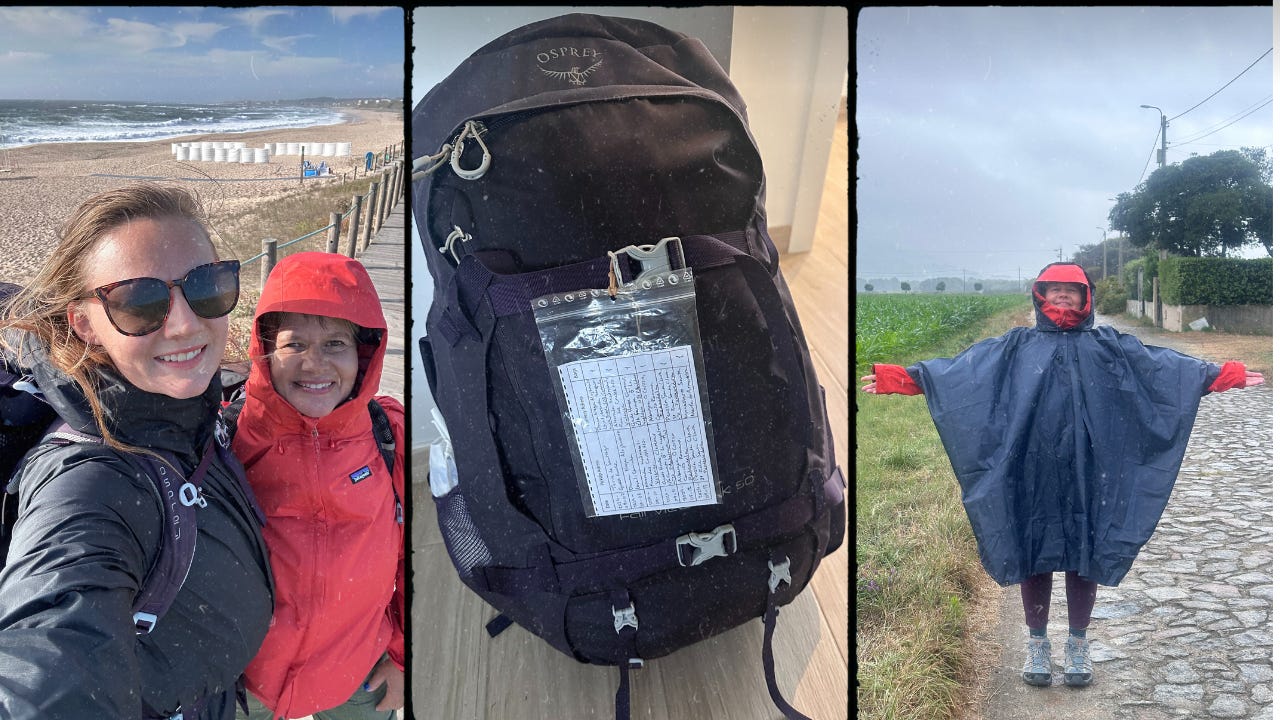
We booked the first luggage transfer directly with our hotel in Esposende, and the rest via the most highly rated service on the camino, Top Santiago. They were very reliable and even managed to provide transfer to a nearby monastery on the Spiritual variant for the night we had booked an airbnb. It cost on average $7/day to transfer our backpack to our next place (though slightly more for the less common Spiritual Variant route).
Best App and Guidebook:
We used the CaminoTool app to navigate the Camino, because of its detailed maps often providing alternative routes to take. We met other pilgrims who also recommended Camino Ninja and Buen Camino.
In a small church in Porto we found an amazing little guidebook for the Portuguese Way that we highly recommend: The Portuguese Way to Santiago de Compostela by Sergio Fonseca. It’s full of cultural insights, detailed maps, and explanations of what to expect on each day of the route.
Accommodation:
We decided to stay in private rooms the whole way. We stayed mainly in guesthouses, but also spent a couple nights in the classic pilgrims’ albergues (that often offer private rooms in addition to more budget-friendly dorms). We stayed twice in hotels, and twice in airbnb stays when we were in sections with less infrastructure for pilgrims (e.g. the Spiritual variant and the stretch between Padrón and Santiago to shorten our last day).
We booked everything at least a couple weeks in advance because we were walking during the high season and wanted to walk at our own pace rather than feel rushed to find a place to sleep that night. The pilgrims we met who had decided to not book ahead had to either camp on the way, and if they hadn’t brought tents, spent the night in a sleeping bag on a beach or even in a vineyard. If you walked outside the high season you could probably be more spontaneous, but also may face more rainy days than we did.
Budget:
We spent on average $40/night per person for accommodation on the camino, sharing a private room at well-reviewed places we found primarily on Booking.com. You could do it cheaper if you stayed in shared dormitories the whole (or even some of the) way.
Many guesthouses and albergues had kitchens available to pilgrims, and cooking your own meals on the camino is a great way to save money on the route, as the prices of goods in grocery stores are relatively affordable in both Portugal and Spain. A pilgrim’s menu is offered at many restaurants along the way, and allows you to have a 3-course lunch or dinner for no more than $10-$15.
Safety:
This is a path you can walk alone or in company of others. All the routes are generally quite safe, with low crime rates, but do ensure you have saved the local Emergency numbers and trust your gut if something feels off. There are active Facebook and Whatsapp groups for every route that are ready to support anyone feeling unsafe.
And don’t forget: for paid subscribers, we’ll offer an hour-long live Zoom call Saturday November 2 at 8am PST/11am EST/5pm CET to answer all your questions about walking the Camino.






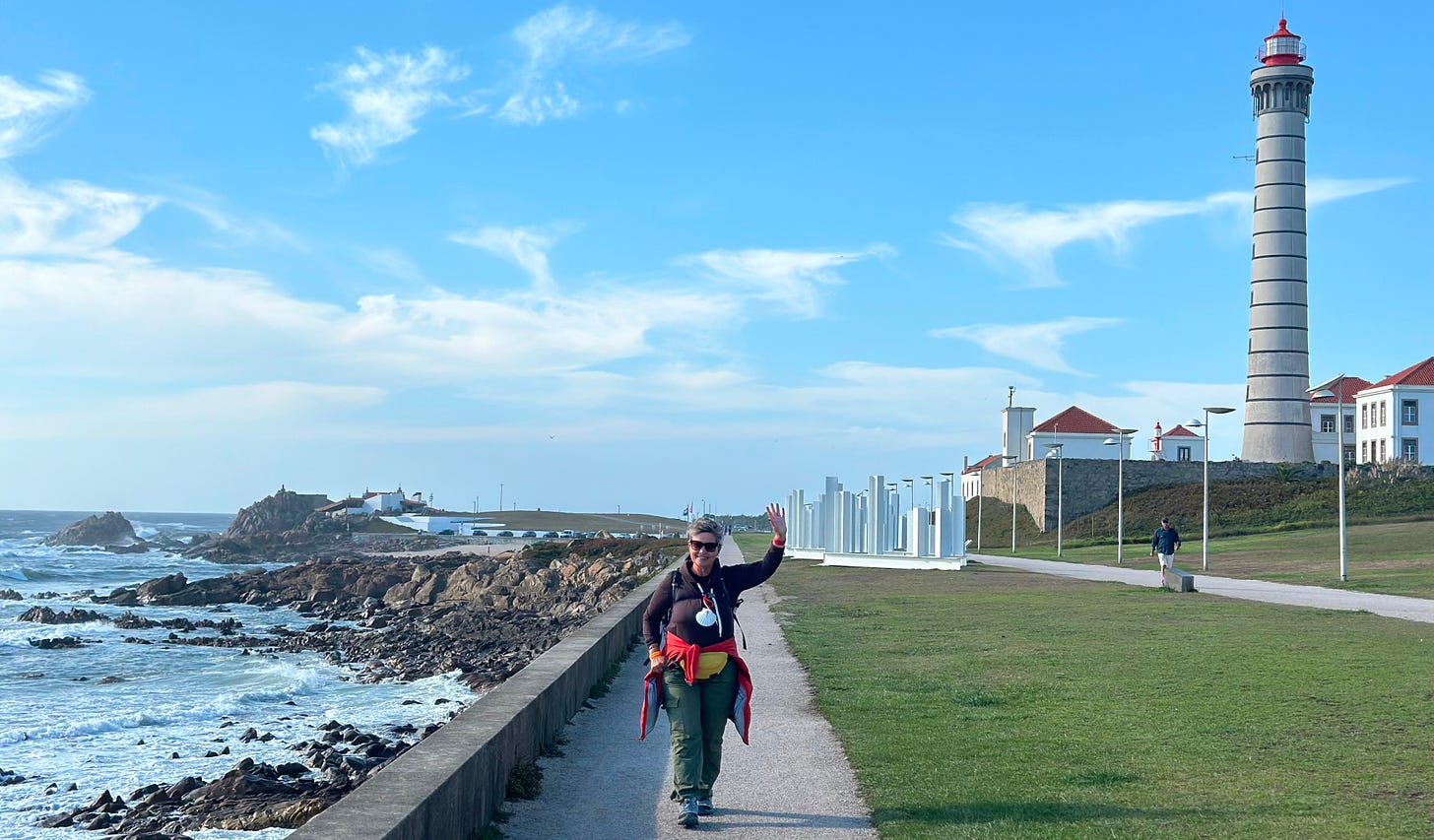

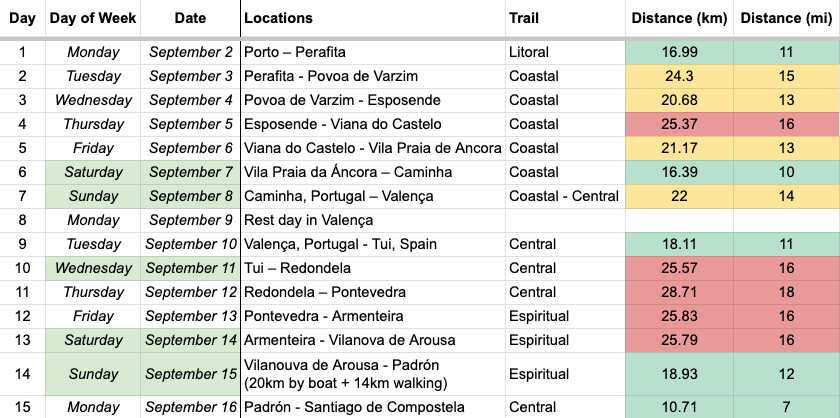
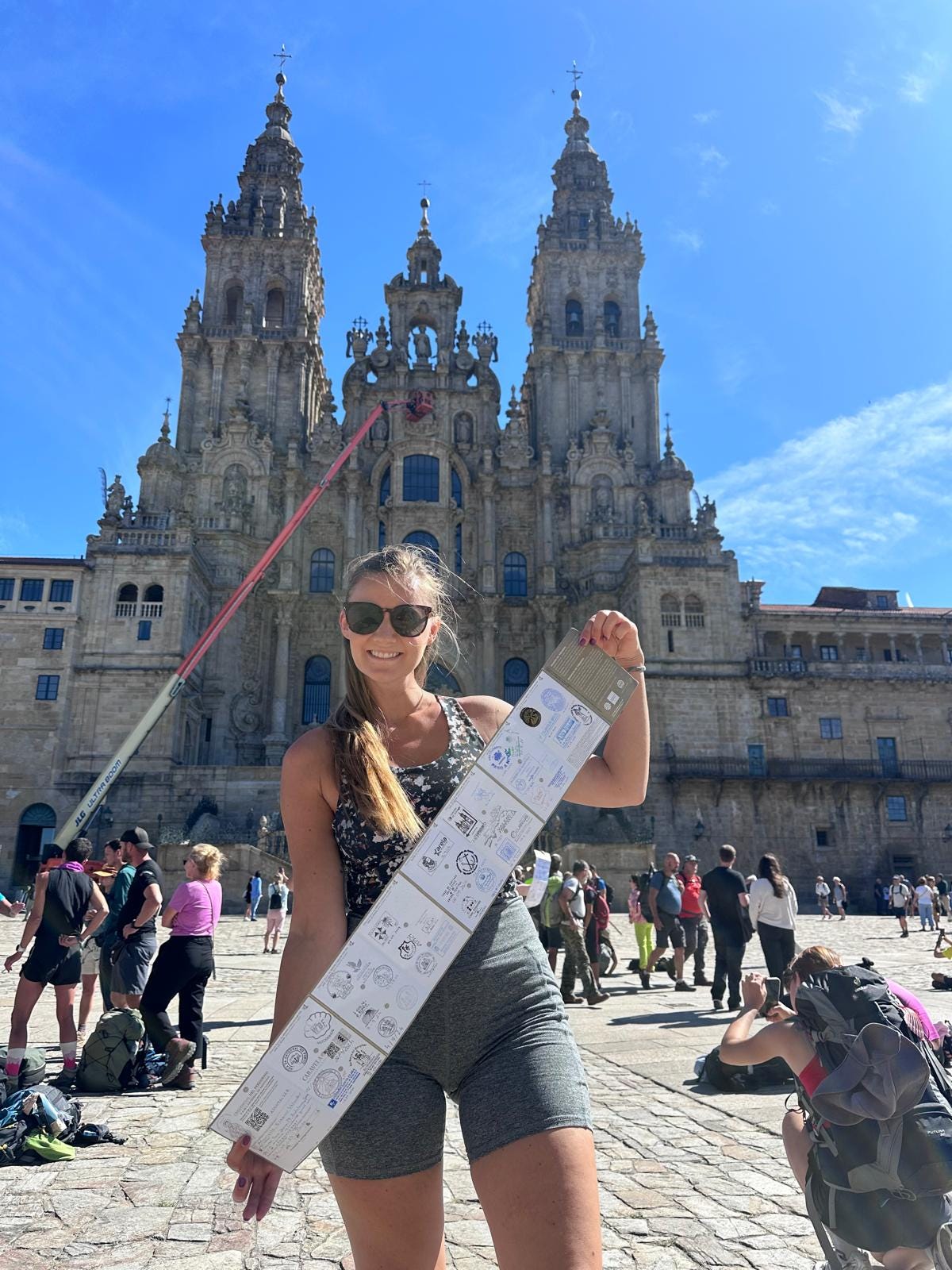

Wonderful post, I'm saving it to return to! Re food, I love a Spanish tortilla, and glad those worked for you. Re shoes, did each of you have only one pair of shoes for the whole way?
This is so helpful! I didn't know you could start in Porto ...